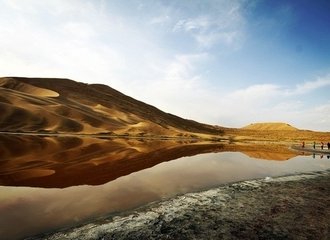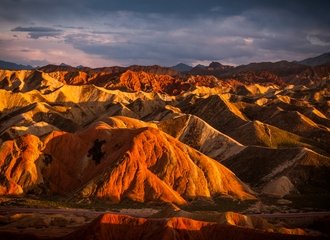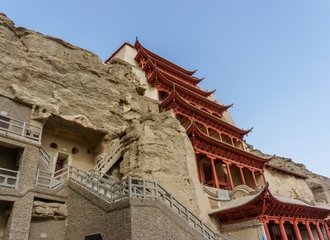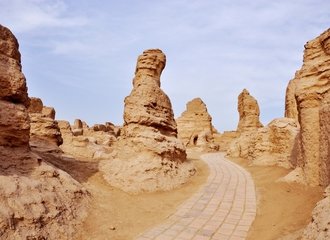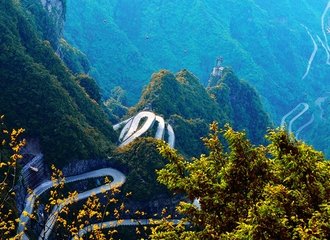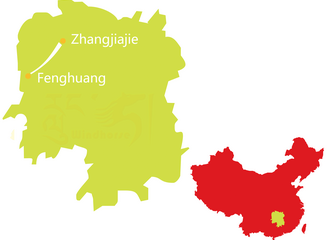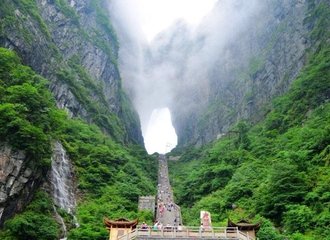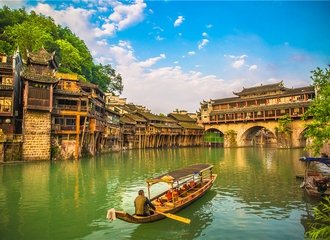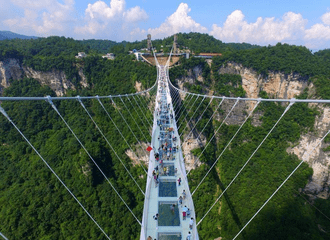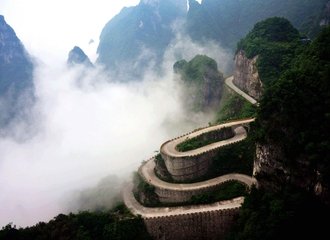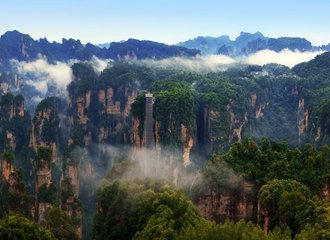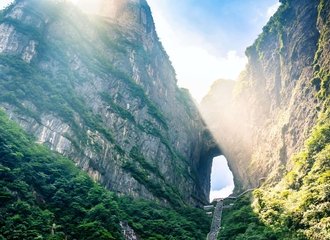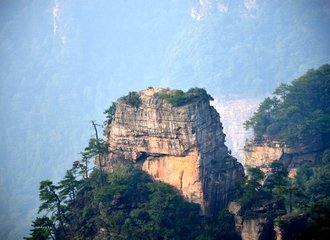Exploring the Majestic Caves of Guilin

Nestled in the Northeast corner of China's Guangxi Zhuang Autonomous Region, Guilin is a city renowned for its breathtaking landscape and rich historical tapestry. The region is characterized by its dramatic karst topography, where hundreds of limestone hills rise abruptly from the ground, creating a surreal and picturesque scene that has been the subject of countless artworks and literary pieces throughout Chinese history.
Guilin's history is as riveting as its landscapes. The area has been inhabited for thousands of years, with evidence of human settlement dating back to the Qin Dynasty (221–206 BC). Over the centuries, Guilin has served as a political, economic, and cultural hub, especially during the Ming Dynasty (1368–1644), when it became a prosperous town due to its strategic location along the Li River.
The Splendor of Guilin’s Caves
Do you know how the wonderful caves in Guilin were formed? After years of precipitation, the isolated limestone peaks and fantastic stalagmite caves in Guilin have been formed underground. The caves in Guilin have attracted a large number of travelers who are from both home and abroad. The Reed Flute Cave is a natural limestone cave with multicolored lighting and has been one of Guilin's most interesting attractions for over 1,200 years. The Seven-Star Cave is an extensive limestone cave complex in Seven-Star Park, both of which are popular tourist attractions in the city of Guilin.
The Reed Flute Cave, Silver Cave, Crown Cave, Seven-Star Cave, and many others each offer a unique subterranean spectacle, making them must-visit destinations for tourists and nature enthusiasts alike.
Furthermore, Guilin's caves are steeped in history and folklore, with many legends and stories associated with them. They have been places of inspiration for poets, artists, and philosophers throughout the ages, contributing significantly to the cultural and spiritual landscape of the region.

Reed Flute Cave (Ludi Yan)
Location and Natural Features
Reed Flute Cave, locally known as Ludi Yan, is one of the most magnificent natural wonders in Guilin, China. Situated in the northwest of Guilin city, approximately 5 kilometers from the downtown area, it is easily accessible and forms a key part of the region's tourist circuit. The cave gets its name from the verdant reeds growing outside its entrance, historically used for making flutes.
The cave stretches over 240 meters and offers a majestic journey through a varied landscape of stalactites, stalagmites, and rock formations created over millions of years. Inside, visitors walk through different chambers, each offering its unique display of carbonate beauty. The formations take on various shapes, some resembling animals, plants, or mythical creatures, and are often associated with interesting legends and stories.
Historical Significance and Cultural Anecdotes
The Reed Flute Cave holds a special place in Chinese history and culture. It has been a tourist attraction for over 1200 years. These ancient inscriptions serve as a testament to the cave's long-standing appeal and significance.
How wonderful it is! What makes you interested in Reed Flute Cave are the more than 70 inscriptions written in ink which can be dated back as far as 792 A.D. in the Tang Dynasty. These old inscriptions tell you that the Reed Flute Cave has attracted many travelers since ancient times. If you are interested in the Reed Flute Cave, please look at 9 Day Guilin and Guizhou Minority Highlights Tour.
Notable Formations and Lighting
The interior of the Reed Flute Cave is a spectacle of color and light. Modern lighting techniques have been employed to highlight and enhance the natural beauty of the limestone formations. The Crystal Palace of the Dragon King is one of the most impressive chambers, with a large, illuminated natural rock dome that is truly awe-inspiring.
Another notable feature is the "Rose Dawn over Lion Forest" – an area where the rock formations, bathed in multicolored lights, create an illusion of a lion forest under the rosy dawn. The lighting in the cave is strategically placed to emphasize the textures and shapes of the formations, adding a magical and ethereal quality to the experience.
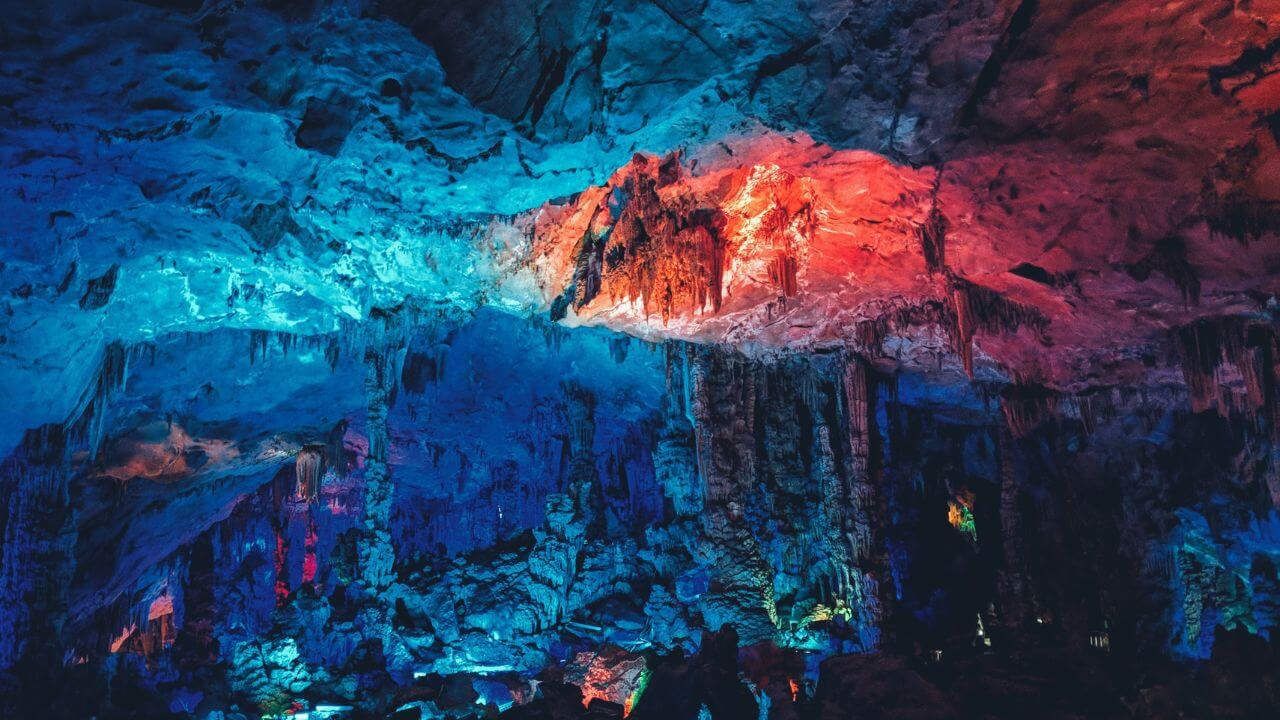
Silver Cave (Yinzi Cave)
Overview of Unique Geological Formations
Silver Cave, known locally as Yinzi Cave, is a remarkable subterranean marvel located in the scenic area of Guilin, specifically in Lipu County. This cave is renowned for its extraordinary geological formations, primarily characterized by the sparkling, silver-like limestone deposits that give the cave its name. The cave system stretches through multiple levels and is noted for its vast array of stalactites, stalagmites, and stone pillars that have been formed over millions of years.
The unique formations within Silver Cave present an astonishing variety of shapes and sizes, often resembling familiar objects and scenes. Noteworthy among these are formations that look like forests of stone, waterfalls frozen in time, and even mythical creatures. The ‘Music Stone Screen’, a large, thin stone that produces musical notes when tapped, and the ‘Snow Mountain with Waterfall’, a formation that resembles a snowy mountain with a cascading waterfall, are particularly mesmerizing.
The Cave’s Three Main Areas
Silver Cave is divided into three main areas, each offering a distinct experience:
Lower Cave: The journey typically begins in the Lower Cave, where visitors are greeted with an array of intricate, smaller-scale formations. This area sets the tone for the adventure ahead, showcasing the delicate and detailed artistry of nature.
Grand Hall: As visitors progress, they enter the Grand Hall, an expansive area with towering ceilings and massive stone columns. This section of the cave is particularly awe-inspiring due to its sheer size and the grandeur of its formations. The play of light on the limestone here creates an almost celestial atmosphere.
Upper Cave: The Upper Cave features a series of narrower passageways and more intimate chambers, each highlighting unique formations. This area offers a more personal and close-up experience with the cave’s natural art.
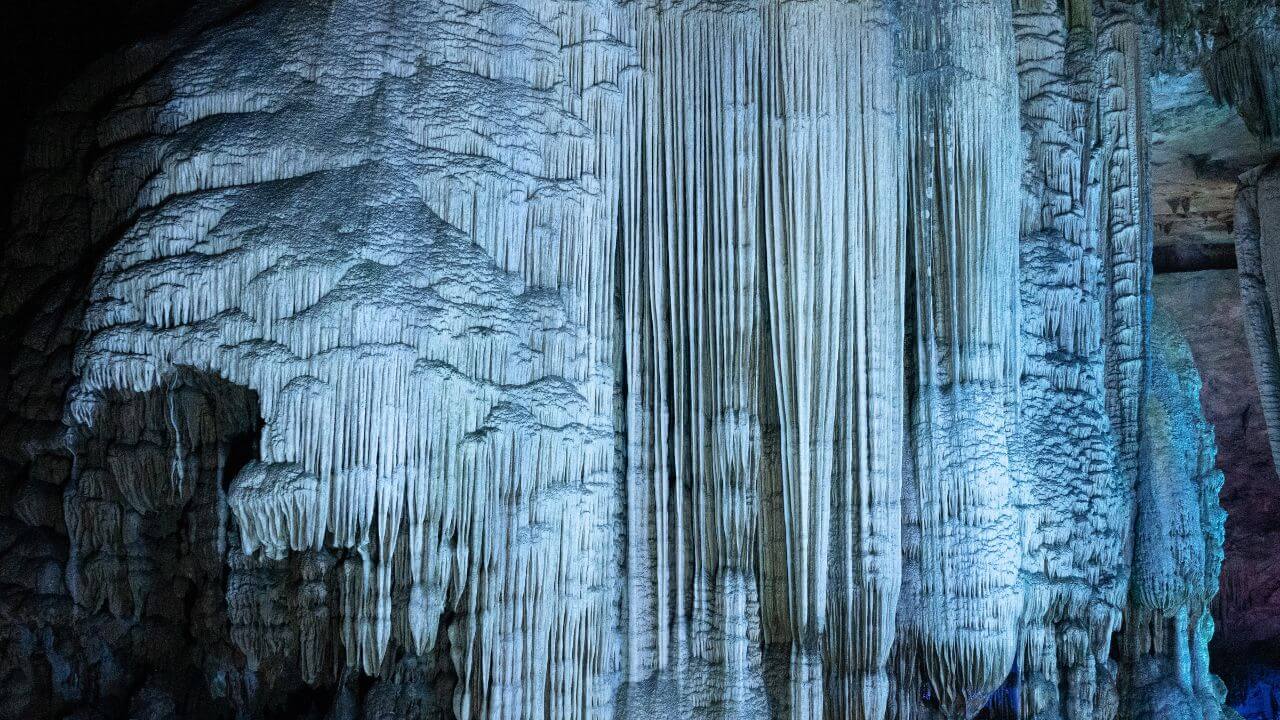
Visitor Experiences and Activities
Visitors to Silver Cave are treated to a well-organized and informative tour, often led by knowledgeable local guides. The pathways are well-maintained and illuminated, ensuring a safe and enchanting experience. The lighting within the cave is strategically used to highlight the textures and colors of the formations, creating a surreal and almost otherworldly environment.
Photography enthusiasts find the cave particularly appealing, as it offers endless opportunities for capturing the interplay of light, shadow, and mineral formations. Additionally, the constant temperature inside the cave provides a cool respite from the outside weather, making it a pleasant experience year-round.
The Silver Cave also occasionally hosts cultural events and performances, leveraging its unique acoustic properties and atmospheric setting. These events offer a blend of natural beauty and cultural enrichment, making Yinzi Cave an unforgettable experience.
Crown Cave (Guan Yan)
History and Discovery
Crown Cave, locally known as Guan Yan, is a celebrated natural wonder located along the banks of the Li River in Guilin. This cave has a long and fascinating history, with evidence of human activity and exploration dating back over a thousand years. Ancient inscriptions found within the cave suggest that it was a known and revered site as far back as the Tang Dynasty (618–907 AD).
The modern discovery and development of Crown Cave, however, began in the late 20th century. It was rediscovered in the 1980s and subsequently opened to the public in 1995. Since then, it has become an integral part of Guilin's karst landscape tourism. The cave was named 'Crown' due to the crown-like shape of the hill under which it is located, and it has been celebrated for its impressive size and the variety of its formations.
Extensive Underground River System
One of the most remarkable features of Crown Cave is its extensive underground river system. The cave is a classic example of karst topography, where the river has played a crucial role in the cave's formation. The underground river stretches over several kilometers, though only a portion of it is accessible to tourists.
As visitors navigate through the cave, they are greeted with the sight of crystal-clear waters meandering through the underground corridors. The river's presence adds to the cave's mystique, with the sound of flowing water echoing off the walls, creating a serene and otherworldly ambiance. The river system also supports a diverse range of aquatic life, adding an ecological dimension to the cave's appeal.
Tours and Exploration Options
Crown Cave offers a variety of tours and exploration options to cater to different interests and preferences. The cave has been equipped with modern facilities, including a comprehensive lighting system that highlights its natural features.
Boat Tour: One of the most popular ways to explore Crown Cave is by boat. This tour takes visitors along the underground river, offering a unique perspective of the cave’s formations.
Sightseeing Train: For those who prefer a dry exploration, there’s a sightseeing train that travels through a section of the cave, providing a comfortable and informative journey.
Elevator and Escalator Access: To ensure accessibility, the cave is equipped with elevators and escalators, allowing visitors to easily navigate its depths and enjoy its splendor without the need for strenuous climbing.
Walking Tour: For a more immersive experience, visitors can opt for a walking tour. This allows for up-close views of the cave's formations, including stalactites, stalagmites, and rock columns, with informative commentary provided by local guides.
Adventure Activities: For the more adventurous, there are options for more exploratory tours, including spelunking and rock climbing in designated areas of the cave complex.
Seven-Star Cave (Qixing Yan)
Connection to the Seven-Star Park
Seven-Star Cave, known in Mandarin as Qixing Yan, is one of Guilin's most iconic natural attractions, situated within the expanse of the Seven-Star Park. The park, named after the seven peaks that resemble the pattern of the Big Dipper constellation (or Qixing in Chinese), is a sprawling area of natural beauty and is among Guilin's largest and most popular public parks. The cave is nestled in Putuo Mountain, one of the park's major peaks, and has been a centerpiece of the park's attractions for centuries.
Historical Use and Significance in Local Folklore
The history of Seven-Star Cave dates back to ancient times and it has been a point of interest since the Tang Dynasty, making it an integral part of Guilin's cultural heritage. Throughout its history, the cave has served various purposes - from a hideout during times of war to a sanctuary for meditation by Buddhist monks.
In local folklore, the cave is often shrouded in mystical narratives and is believed to be a dwelling of spirits and deities. These stories, passed down through generations, add a rich layer of cultural significance to the cave and contribute to its mystical appeal. The cave has also been a source of inspiration for numerous Chinese poets and artists, drawn by its natural beauty and ethereal atmosphere.
Key Features: Stalactites and Stone Pillars
The Seven-Star Cave is renowned for its stunning interior, featuring an array of impressive stalactites, stalagmites, and stone pillars. These formations have developed over millions of years and create a surreal landscape inside the cave.
Stalactites and Stalagmites: The cave is adorned with beautifully formed stalactites and stalagmites of various shapes and sizes. These formations, created by the dripping of mineral-rich water over centuries, resemble everything from mythical creatures to everyday objects, igniting the imagination of visitors.
Stone Pillars: The massive stone pillars, formed by the merging of stalactites and stalagmites, are awe-inspiring. Some of these pillars reach towering heights, creating an almost cathedral-like ambiance within the cave.
Natural Lighting and Reflections: The cave's lighting system enhances its natural features, casting shadows and creating reflections that amplify the cave's mystical aura. This interplay of light and shadow brings the cave’s formations to life, creating a dynamic and ever-changing environment.
Walkways and Viewing Platforms: The cave is equipped with well-maintained walkways and viewing platforms, allowing visitors to safely navigate and appreciate the intricate details of its interior. These pathways provide an up-close view of the cave's features while preserving its natural state.
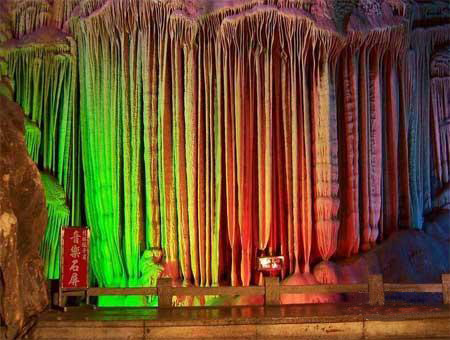
Longji Water Cave
Natural Hot Springs and Mud Baths
Longji Water Cave, nestled in the scenic Longsheng County near Guilin, is famed for its natural hot springs and mud baths, offering a unique and therapeutic experience unlike any other cave in the region. The cave boasts several hot spring pools, each varying in temperature and mineral content. These natural springs are believed to have healing properties and provide a relaxing retreat for visitors.
Inside the cave, the mud baths are a highlight. The mud, rich in minerals, is said to have skin-softening and health-promoting benefits. Visitors often indulge in the playful and rejuvenating experience of covering themselves in this natural mud, followed by a warm rinse in the hot spring waters.
Unique Cave Formations and Water Features
Longji Water Cave is also renowned for its stunning array of speleothems – the stalactites, stalagmites, and rock formations created by mineral deposits. The cave formations here are notable for their intricate designs and the way they interact with the cave’s water features, creating reflective pools and shimmering surfaces that enhance the cave's mystical ambiance.
The presence of flowing water throughout the cave adds to its unique charm. Streams and small waterfalls create a serene soundtrack to the exploration, while the lighting inside the cave accentuates the beauty of the water as it interacts with the rock formations.
Visitor Amenities and Experiences
The Longji Water Cave is well-equipped with amenities to ensure a comfortable and enjoyable visit. These include:
- Changing rooms and lockers for visitors using the hot springs and mud baths.
- Guided tours that provide insights into the cave's geology and history.
- Well-maintained walkways and lighting for safe exploration of the cave.
- A gift shop and rest area near the entrance, offering local souvenirs and refreshments.
The cave offers a unique blend of natural beauty, relaxation, and adventure, making it a must-visit destination for those seeking a different kind of cave experience in Guilin.
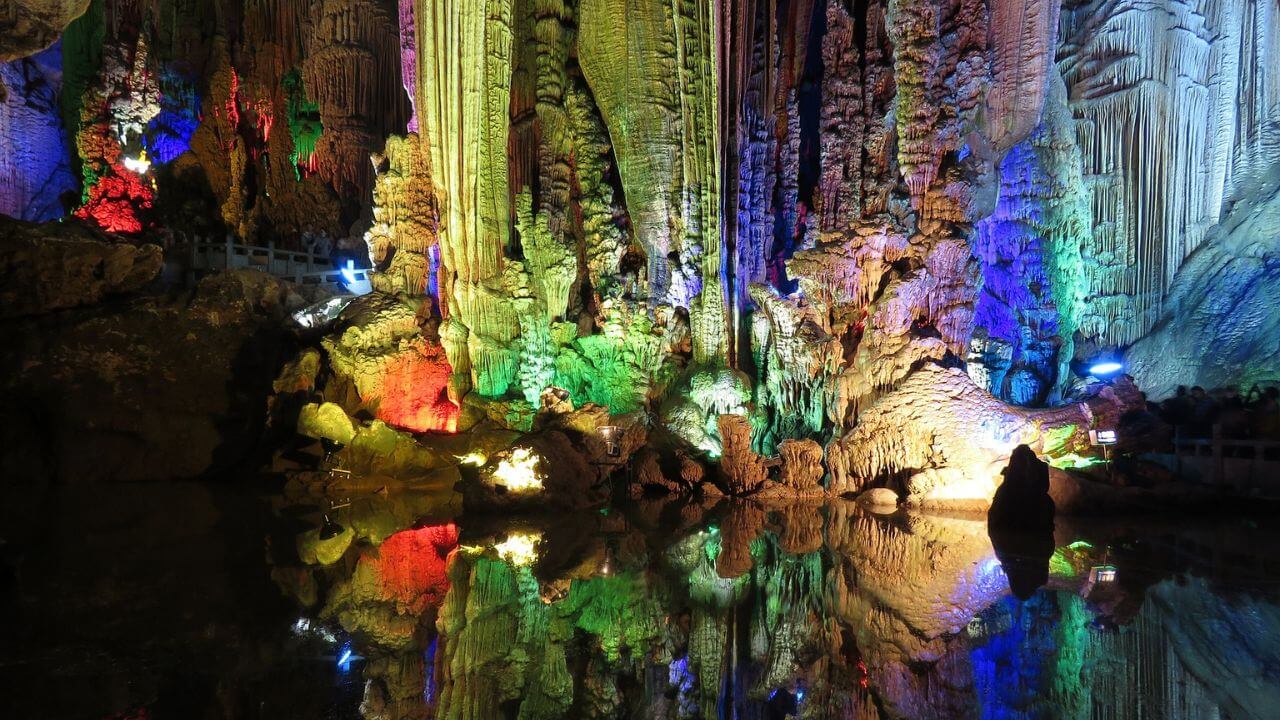
Other Notable Caves in Guilin
Butterfly Spring Cave: Known for its butterfly-shaped stalactite, this cave is a wonderland of diverse rock formations. Local legend ties it to a romantic story, adding a layer of cultural intrigue.
Water Moon Cave: Situated on the banks of the Li River, this cave is unique for its water-level opening that creates a reflection resembling a full moon. It offers a picturesque and tranquil experience.
Crystal Palace Cave: This cave is celebrated for its translucent formations that resemble crystals and jewels. The play of light within the cave further enhances its sparkling beauty.
Swan Lake Cave: Named after its underground lake where swans are often seen, this cave features spectacular limestone formations and a serene lake setting.
Fairy Maiden Cave: Rich in folklore, this cave is said to be the home of a fairy maiden. It is characterized by its delicate and ethereal rock formations, which fuel the imagination.
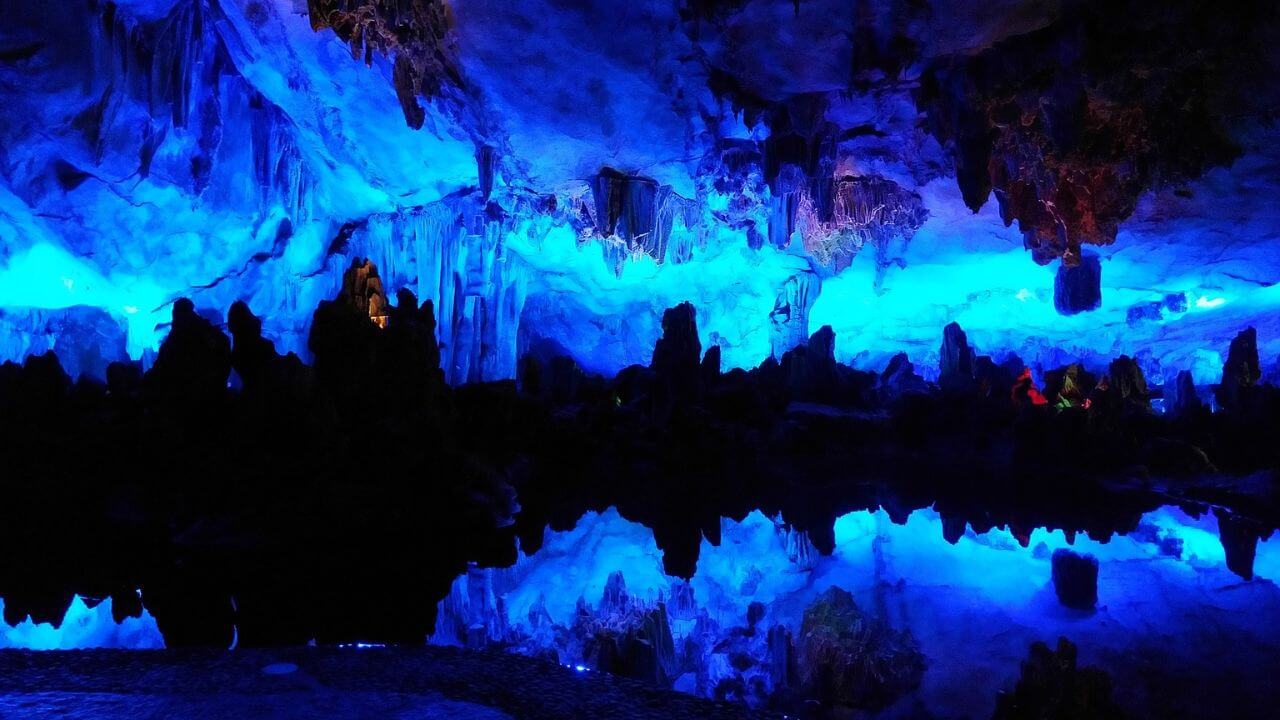
Tips for you when you travel to Seven-Star near Li River
- The hotels are always booked out for the weekends and festivals. You should book them in advance. It is very convenient to join a tour: 3 Day Classical Guilin and Yangshuo Tour.
- You should prepare the extra clothes based on the different seasons.
- Bring your clothes which are convenient for different activities. Ladies are recommended not to wear short skirts because of the mosquitoes.
- There are many delicious snacks for visitors. You should pay attention to the food hygiene.
- Don't throw the waste anywhere. Take care of the environment in caves in Guilin.
- Do some activities to warm yourself before taking a cold bath. The water in the mountain spring is very cold.
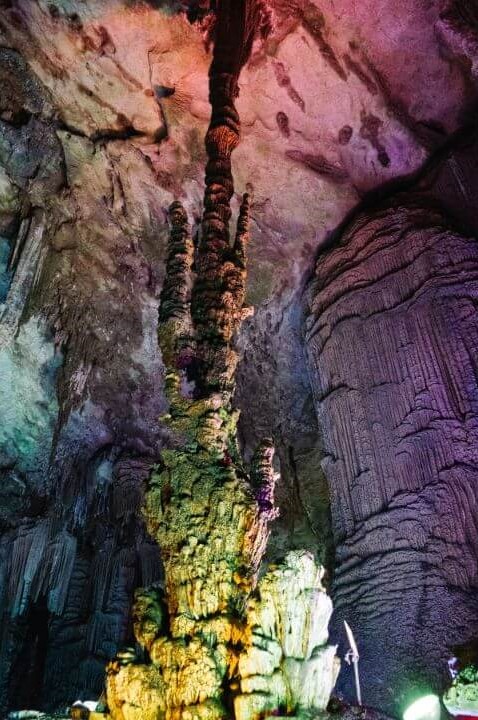
Enjoy yourself in the amazing caves in Guilin and feel the magic of nature.
From the historic Reed Flute Cave, with its ancient inscriptions, to the therapeutic hot springs of Longji Water Cave, each cavern tells a unique story. The Silver Cave dazzles with its intricate formations, while Crown Cave offers an adventurous journey through its extensive underground river. The mystical allure of Seven-Star Cave, rooted in folklore, captivates the imagination, just as the lesser-known caves like Butterfly Spring and Water Moon add to Guilin's rich subterranean diversity.
These caves, each a world unto itself, are united in their testament to the timeless beauty of nature and the enduring allure of mystery. They are a reminder of our planet's dynamic history and the wonders that lie beneath our feet. For travelers and nature enthusiasts alike, Guilin's caves represent an unforgettable journey through the heart of China's natural splendor, leaving visitors with a sense of awe and a deepened appreciation for the wonders of our natural world.




